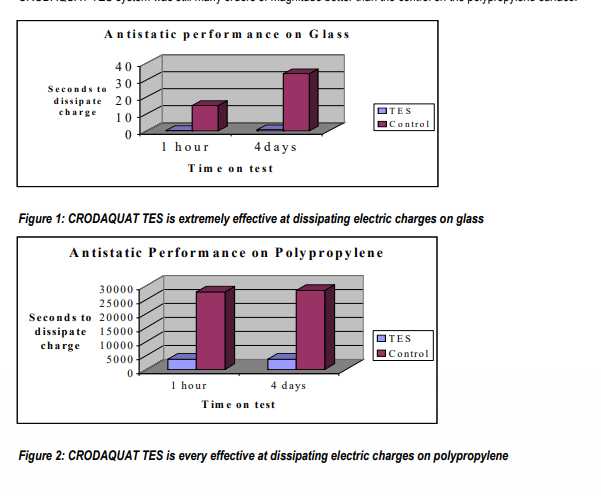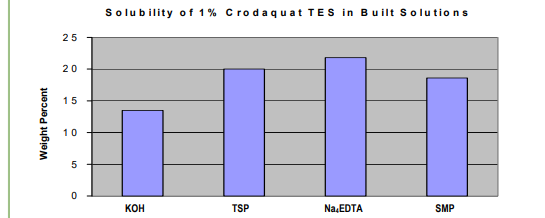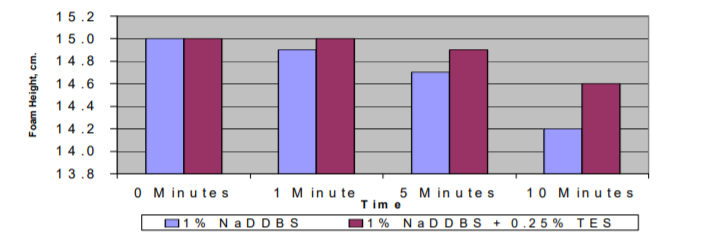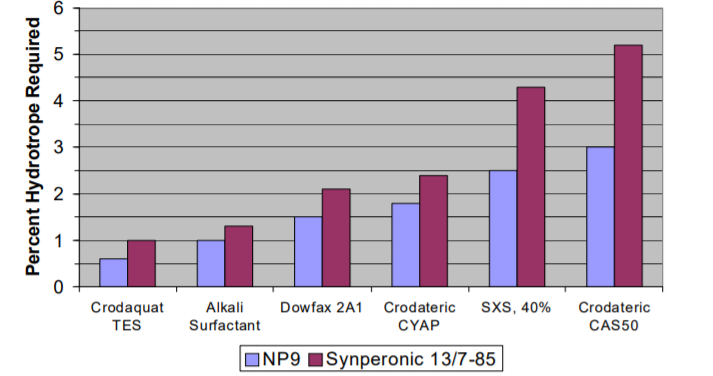Knowde Enhanced TDS
Identification & Functionality
- Chemical Family
- Chemical Name
- Cleaning Ingredients Functions
- CAS No.
- 68071-95-4
- EC No.
- 614-259-8
- Technologies
Features & Benefits
- HII Features
- Benefits
- Powerful antistatic properties
- Functions as a cationic detergent
- Improves foam stability of anionic surfactants
- Stable in acidic media
- Excellent coupler of nonionic surfactants
- Compatible with anionic surfactants
- Good solubility in common detergent builders
- Significant acid and alkali solubility
Applications & Uses
- Markets
- Applications
- Home Care Applications
- I&I Cleaning Applications
- Applications
Touchless Cleaners
- Car & Truck Washes
- Wheel Cleaners
- Vinyl & Aluminum Siding Washes
General Purpose Antistats
- Glass Cleaners
- Furniture Polishes
- Electronics Specialty Cleaners
- Carpet Treatments
Built Hard Surface Cleaners
- Tile & Grout Cleaners
- Scale Removers
- Steam Cleaners
Properties
- Physical Form
Technical Details & Test Data
- Antistatic Performance
The antistatic performance of CRODAQUAT TES has been evaluated by measuring its effectiveness in dissipating applied electrical charges. The faster the charge dissipation – the more effective the antistat.
Test Conditions
Glass and polypropylene tiles were treated with the test formulations indicated below. A charge was applied to the surface and measurements were taken to determine the time needed for the charge to dissipate. The following formulations were evaluated.
Test weight % Control weight % Crodaquat™ TES 1 0 IPA 20 20 Water 79 80 Results
Performance on glass was excellent versus the control. While not as impressive as the glass performance, the Crodaquat™ TES system was still many orders of magnitude better than the control on the polypropylene surface.

Figure 1: CRODAQUAT TES is extremely effective at dissipating electric charges on glass
Figure 2: CRODAQUAT TES is every effective at dissipating electric charges on polypropylene
- Solubility
Crodaquat™ TES is soluble and stable in a wide range of inorganic builders and mineral acids commonly employed in cleaning compounds. This makes Crodaquat™ TES suitable for use in many industrial cleaning applications that would cause problems for other quats.
Solubility of 1% Crodaquat™ TES in Build Solutions.

Figure 3: Crodaquat™ TES is soluble and stable in many common materials used in cleaning compounds
- Foaming Properties
Quaternary compounds typically form an insoluble complex with common anionic surfactants due to their charge differences. This complex typically posesses cleaning and foaming properties that are inferior to those of the anionic surfactant alone. In addition, the benefits afforded by the quat can be lost in the complex. Worse still, the complex can also lead to instability in the formulation.
Crodaquat™ TES has been shown to have no adverse impact on the foaming properties of the sodium salt of DDBSA – an anionic surfactant commonly used in industrial cleaners. It is thought that this is at least in part due to the decentralized charge of Crodaquat™ TES.
Foam Stability Effect of Crodaquat™ TES

Figure 4: Crodaquat™ TES has no adverse impact on the foaming properties of NaDDBS
- Coupling Properties
It is often difficult to incorporate nonionic surfactants into heavily built cleaners due to limited solubilities. While formulators often use a hydrotrope such as sodium xylene sulfonate (SXS) to couple the nonionics into solution, this hydrotrope and related sulfonates do little else to benefit the formulation. In fact, the percentage of a formulation that is comprised of hydrotrope can often be signficant thus limiting the amount of detergent actives that can be effectively incorporated into the finished product.
Like the sulfonates, Crodaquat™ TES is very effective in acting as a coupling agent for nonionics. Unlike the sulfonates, Crodaquat™ TES brings other benefits to the formulation such as detergency, and static control. These additional benefits can also be achieved while obtaining the desired coupling at lower use levels. This allows the formulator to incorporate more functional ingredients into the cleaner while getting the desired coupling and the added benefits afforded by Crodaquat™ TES.
Coupling Properties 5% Nonionic Surfactant + 5% Trisodium Phosphate; to 50ºC.

Figure 5. Crodaquat™ TES provides excellent coupling benefits when used in formulation with non-ionic surfactants, as well as many other benefits
Packaging & Availability
- Country Availability
- Regional Availability